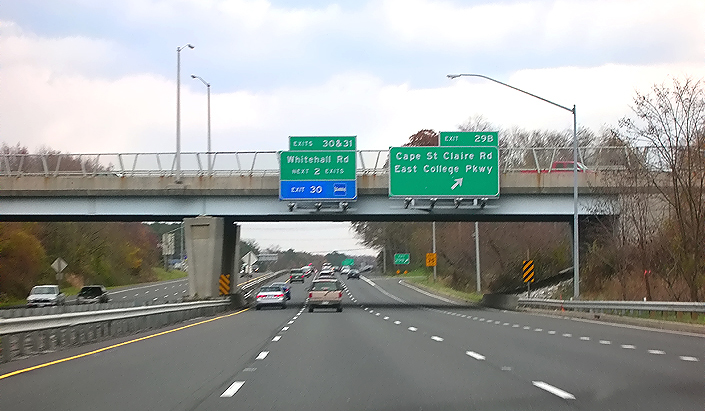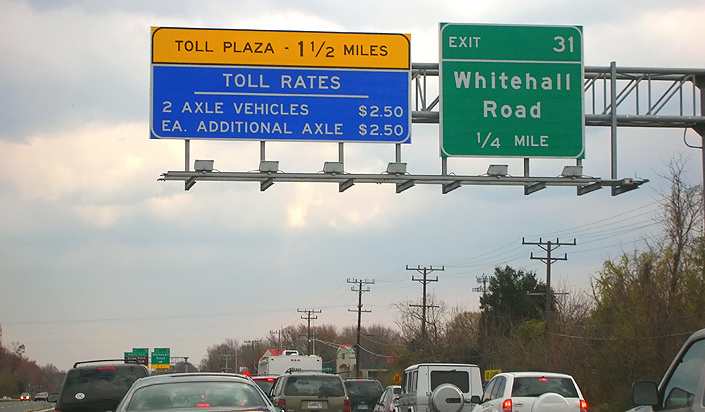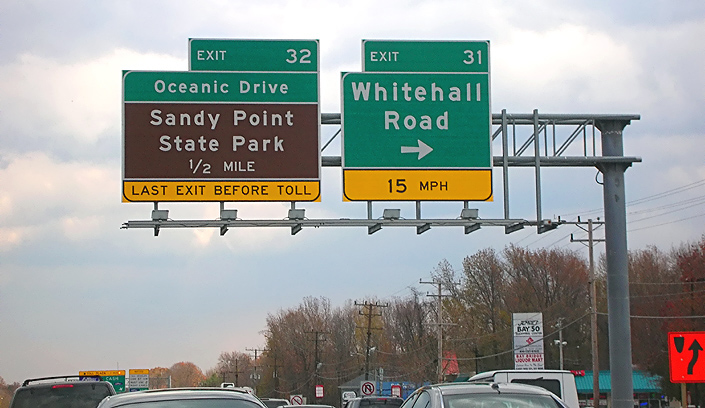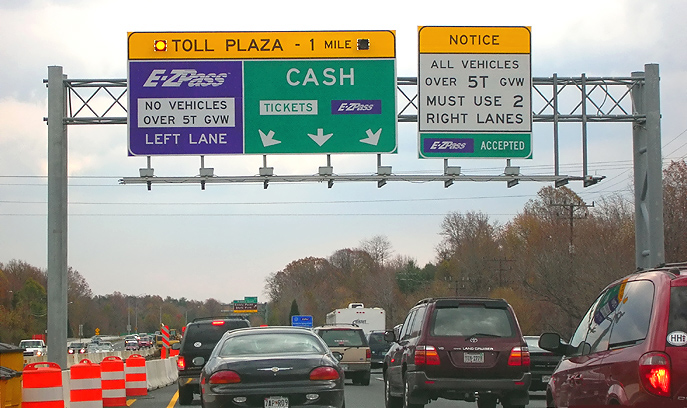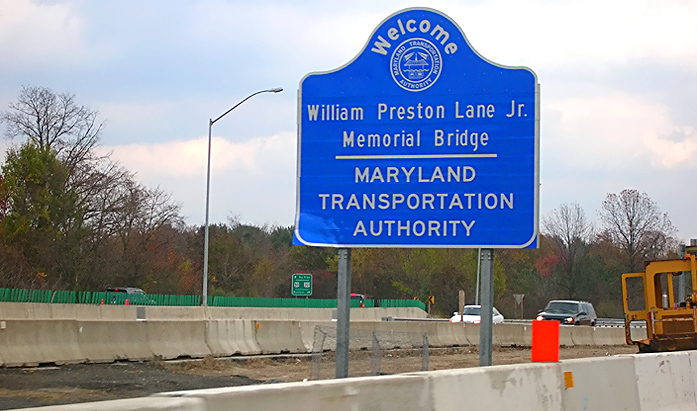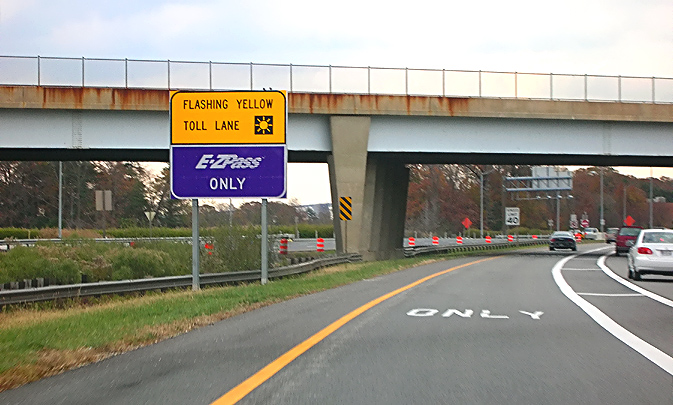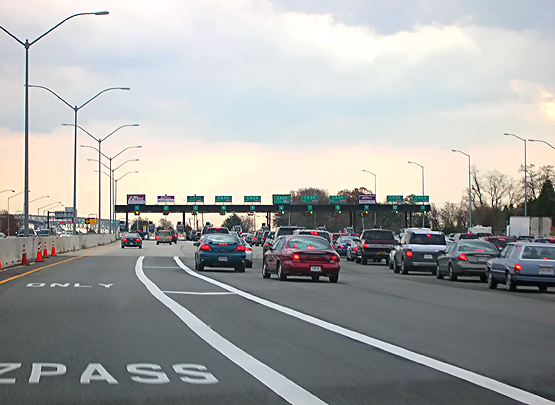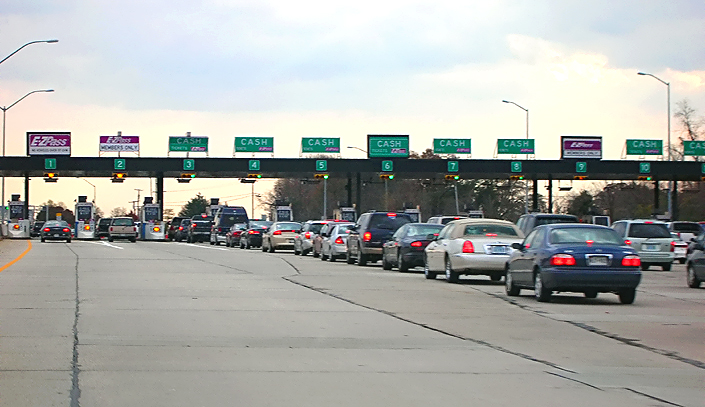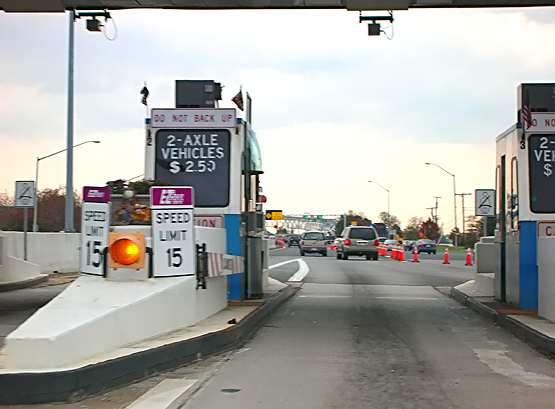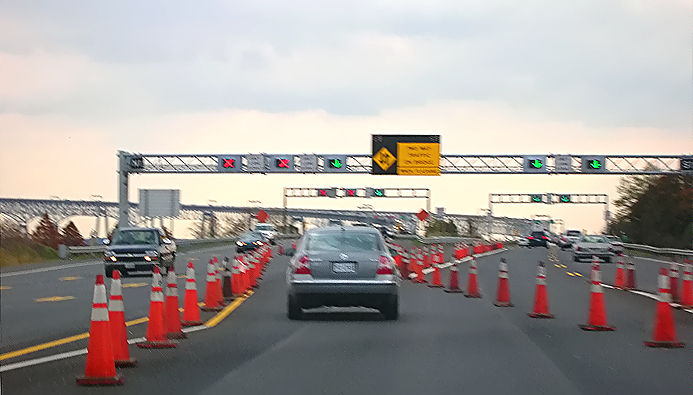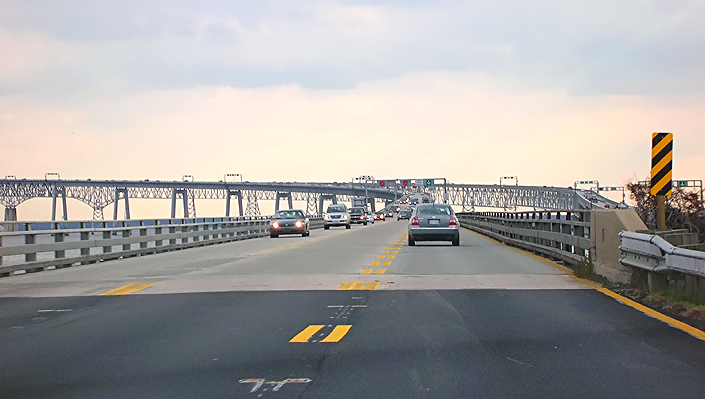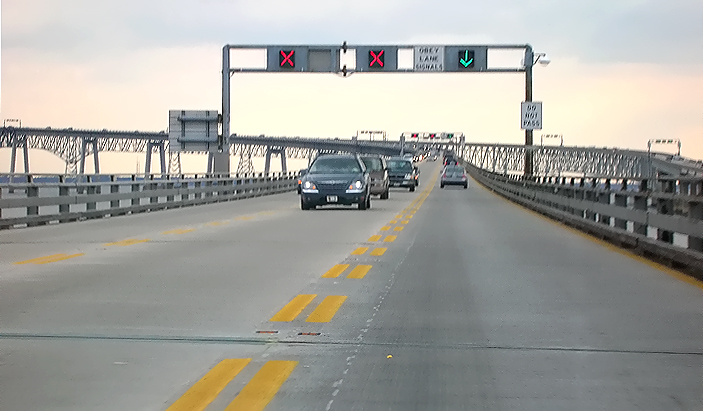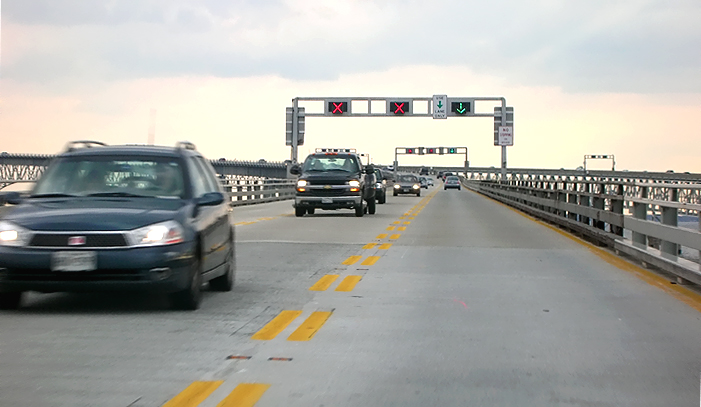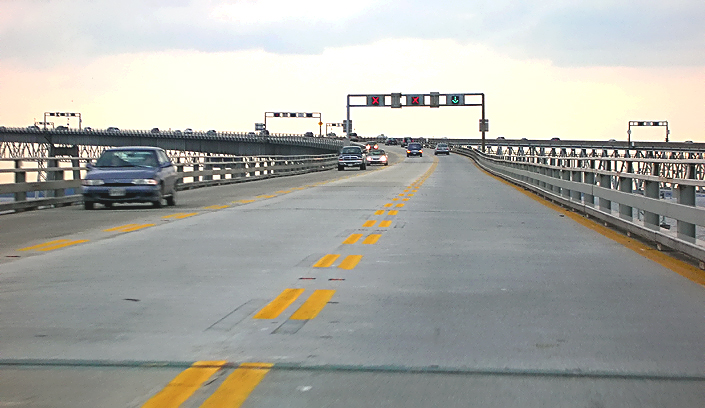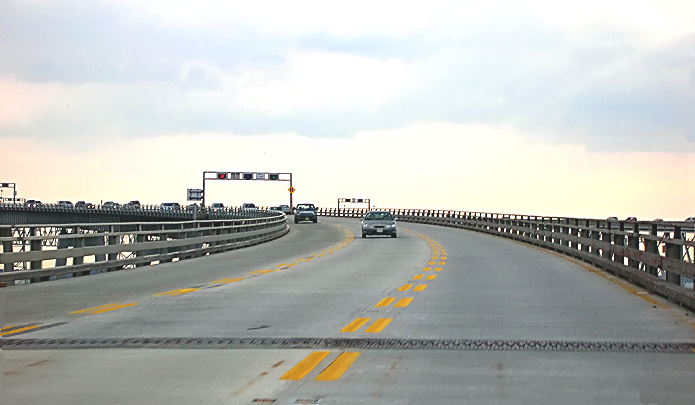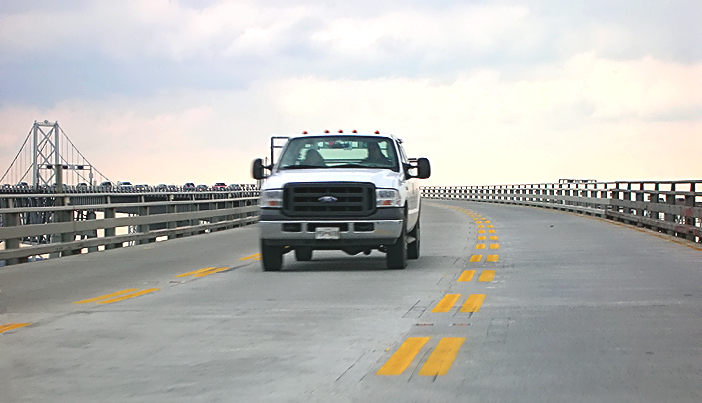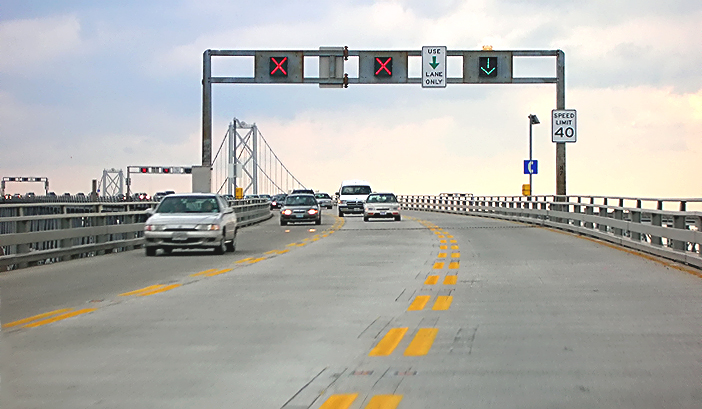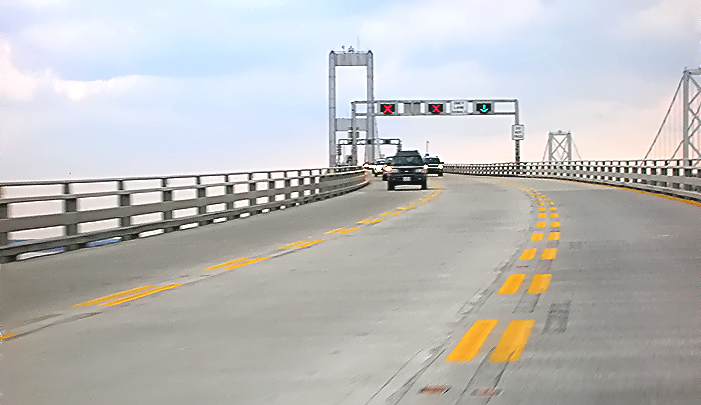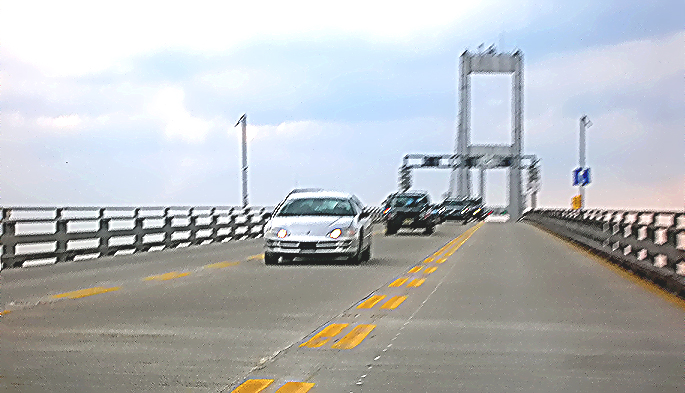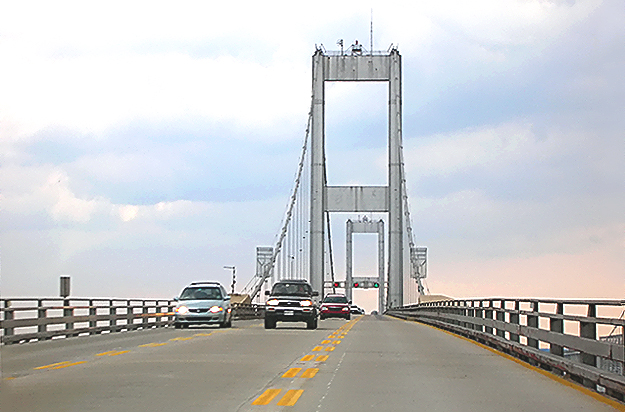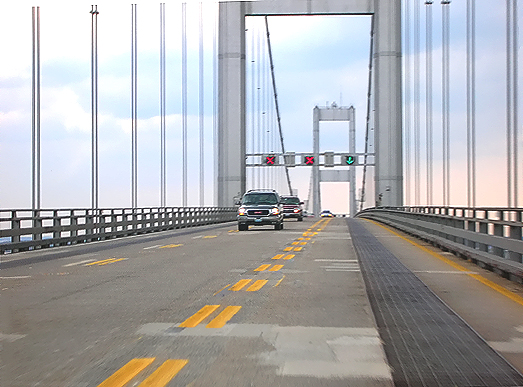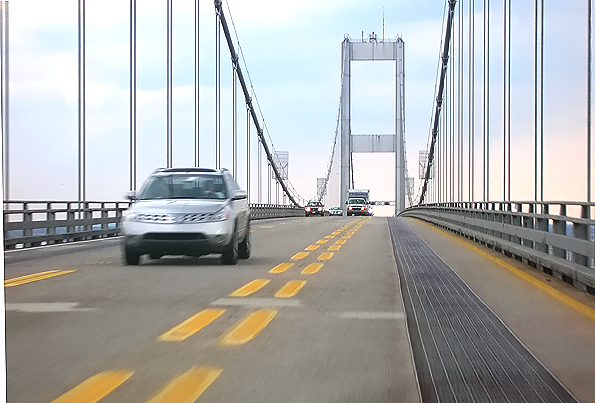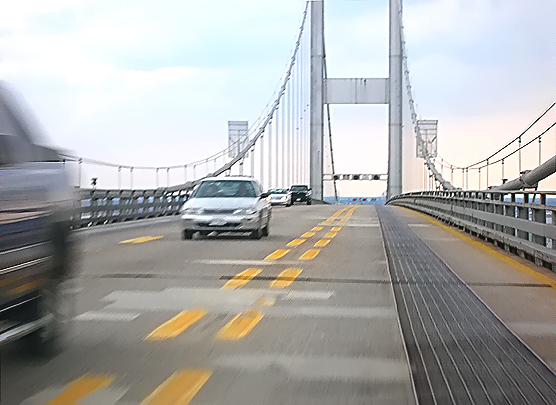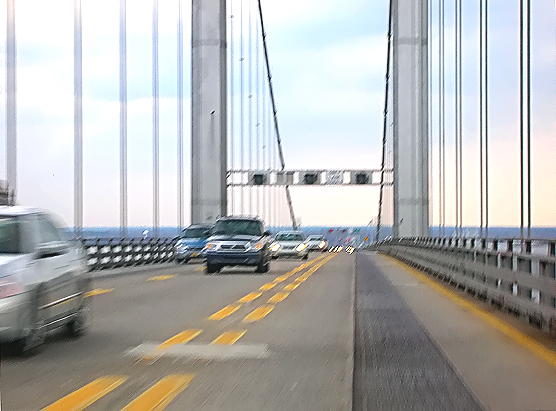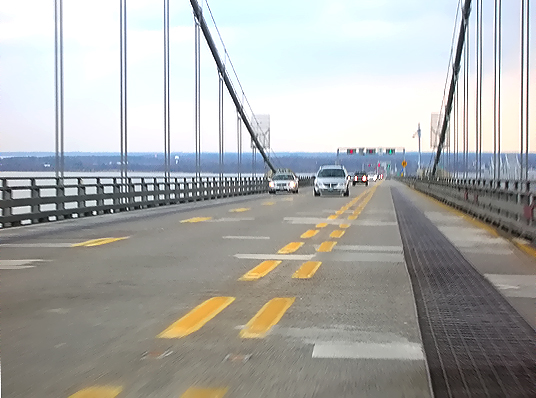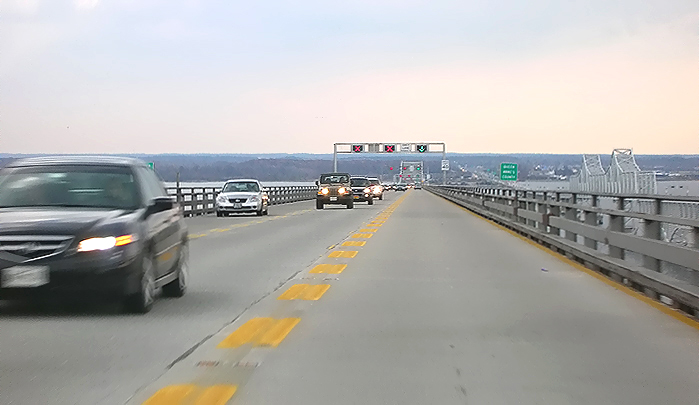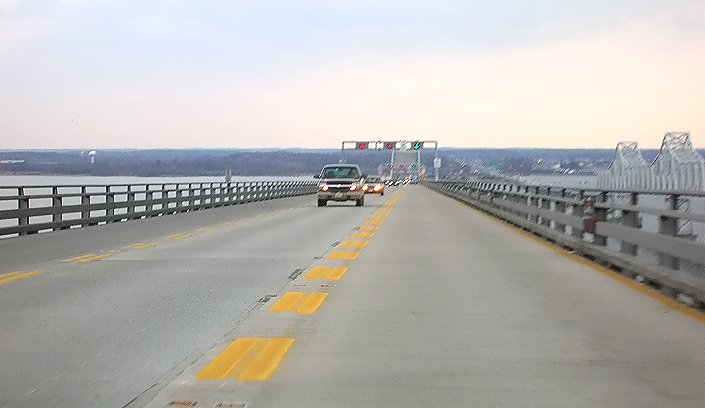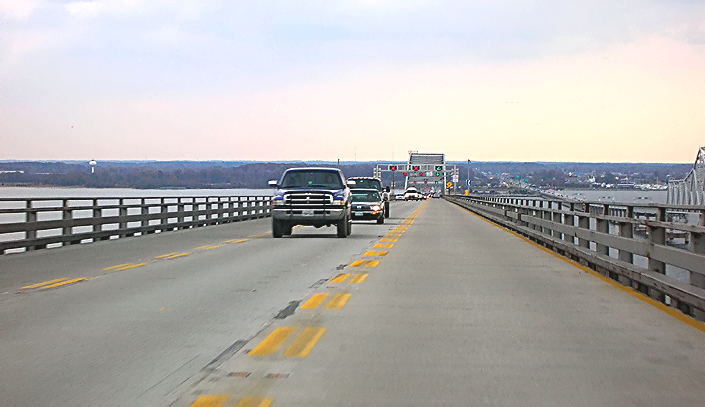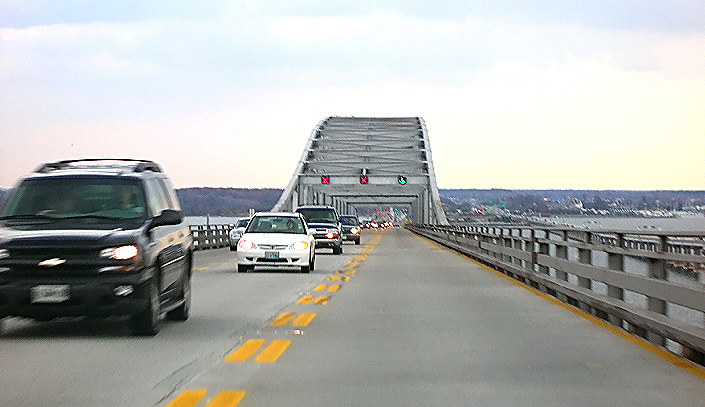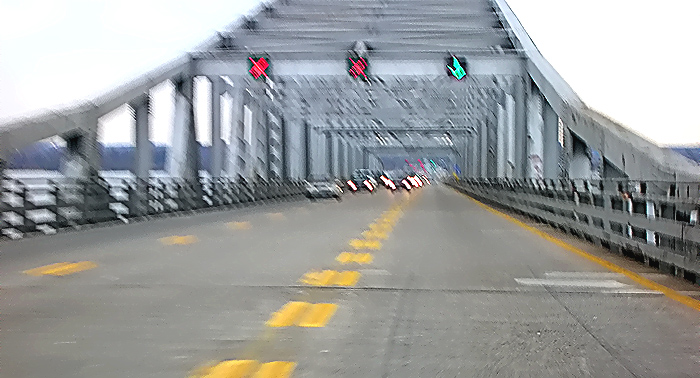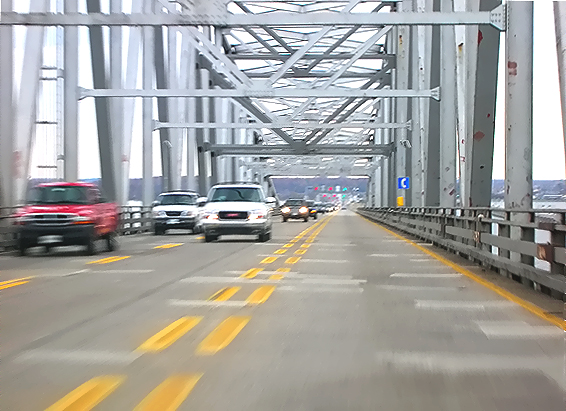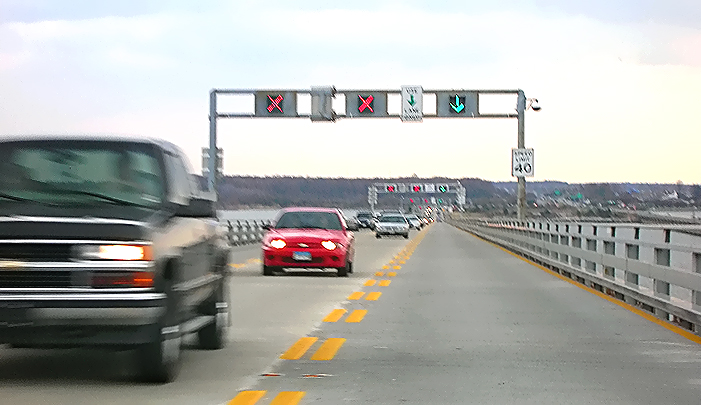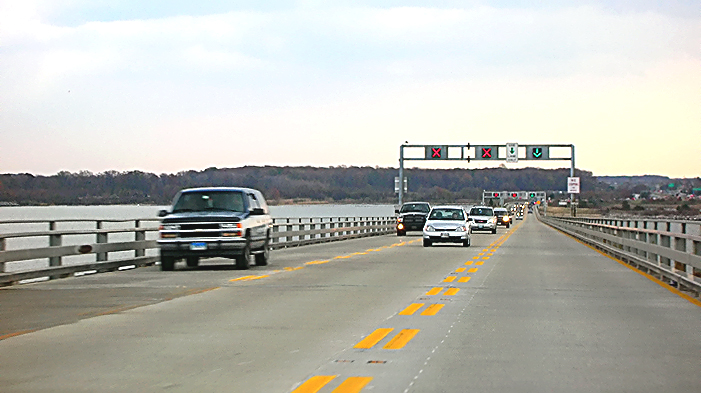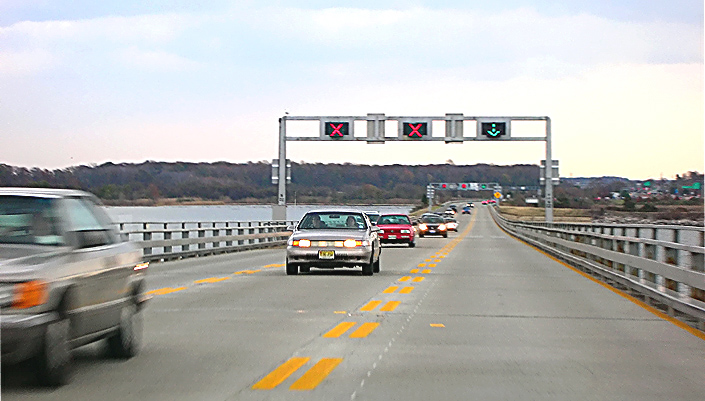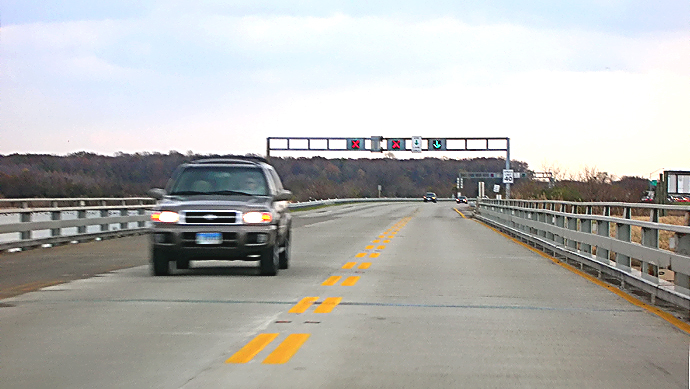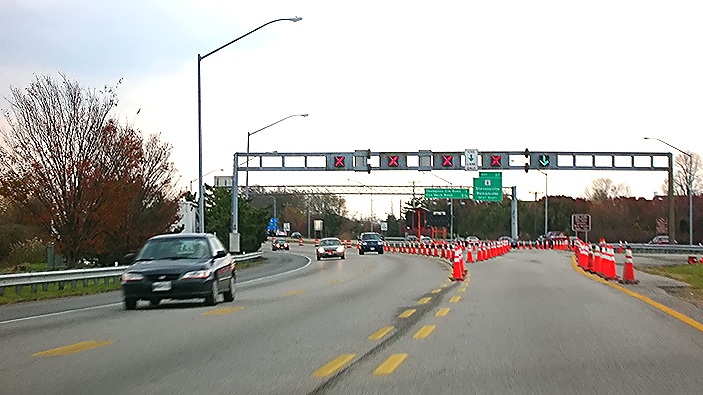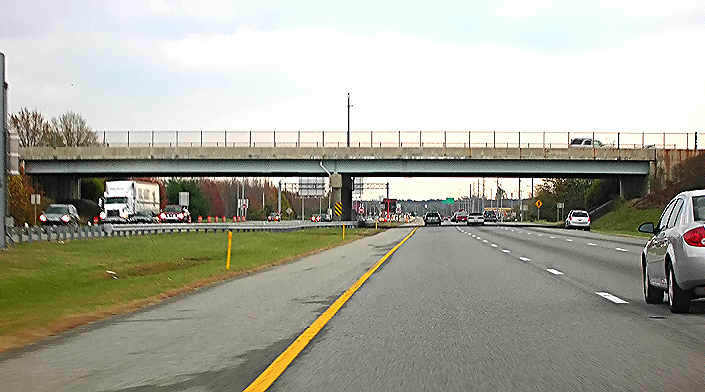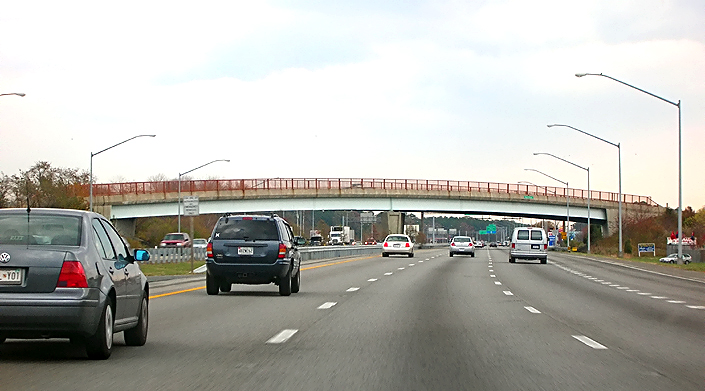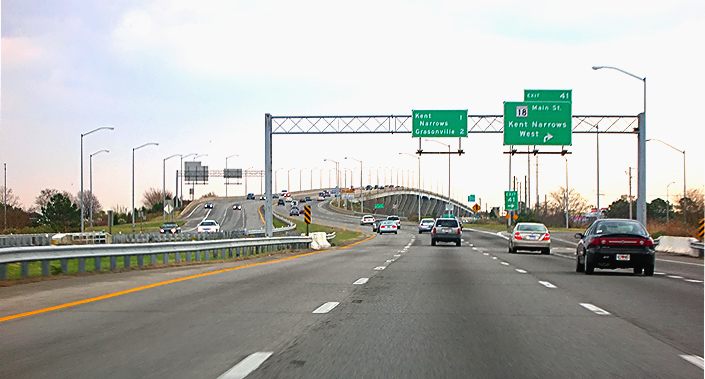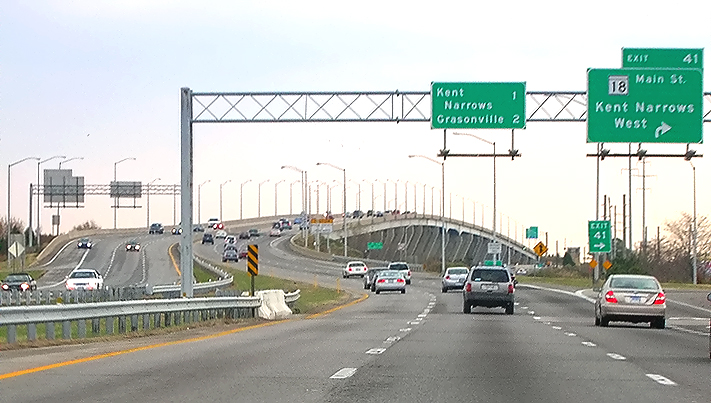| Chesapeake Bay Bridge Photos - November 2005 |
Here are 40 photos, taken on November 24, 2005, in sequence, of a ride across the Chesapeake Bay Bridge, traveling eastbound on the reversed inner lane of the westbound bridge. This photo sequence includes the US-50/US-301 approaches from 3 miles before the Bay Bridge to 5 miles after the Bay Bridge.
The eastbound Chesapeake Bay Bridge opened in 1952 and has 2 lanes, and the westbound Bay Bridge opened in 1973 and has 3 lanes. All lanes are reversible via overhead lane control signals. Normally the eastbound bridge carries all its lanes eastbound and the westbound bridge carries all its lanes westbound. In times of heavy peak eastbound traffic, it is common to reverse the inner lane of the westbound bridge so that there is one eastbound lane on that bridge in addition to the two eastbound lanes on the eastbound bridge, for a total of 3 eastbound lanes; and the westbound bridge carries 2 lanes of westbound traffic on its middle and outer lanes. US-50 is a 6-lane (3 each way) freeway between the I-95/I-495 Capital Beltway and the US-50/US-301 split near Queenstown on the Eastern Shore, except for the 5-lane twin-span Bay Bridge. The normal configuration of 3 lanes on the westbound bridge matches the 3 westbound lanes on the US-50 freeway. When one lane is reversed on the westbound bridge there are a total of 3 eastbound lanes, which matches the 3 eastbound lanes on the US-50 freeway. Therefore, at peak traffic periods which tend to be peak in one direction only, the number of lanes on the bridge can be configured to match the number of lanes on the freeway approaches, and still have 2 lanes in the direction with the lower level of traffic. It is possible to configure 4 lanes in the direction of peak traffic, but the resulting single lane in the opposite direction would be severely congested as a result. It is also possible to close one bridge entirely for maintenance or in case of a serious accident, and to run two-way traffic on the other bridge, which on the eastbound bridge would be one lane each way, and which on the westbound bridge would be two lanes in the peak direction and one lane in the opposite direction.
Actually the one-direction traffic capacity of the Bay Bridge is
substantially less than what a modern 6-lane (3 each way) freeway can provide.
A freeway with 12-foot-wide lanes and full emergency shoulders and an adequate
alignment can carry up to about 2,000 vehicles per lane per hour, while the
Bay Bridge's maximum capacity is about 1,500 vehicles per lane per hour, due
to fact that while the lanes are 12 feet wide, there are minimal shoulders
(one foot and seven inches or 1'7" on each side of the 2-lane eastbound
bridge's roadway, and one foot on each side of the 3-lane westbound bridge's
roadway), and the
long curve in the westbound bridge about a mile from the western shore, in
conjunction with the minimal shoulders, under heavy traffic often slows vehicles
leading to reduced capacity. See
Bay Bridge History, on the
Maryland Transportation
Authority (MdTA) report
Task Force on Traffic Capacity Across the Chesapeake Bay. Excerpt (in blue
text):
The three lanes of US 50 leading to the bridge, in each direction, can carry
about 6,000 cars per hour, significantly in excess of the roughly 4,500
maximum one-way capacity of the bridge.
That "roughly 4,500 maximum one-way capacity of the bridge" is based on operating 3 lanes in the direction of peak traffic. Operating 4 lanes in one direction would provide about the same 6,000 vehicles per hour capacity that each 3-lane US-50 freeway approach roadway provides, and the lane control signal system could accommodate that operational format, but that format is considered infeasible due to the fact that the opposing direction normally still has enough traffic that having only one lane open would result in gridlock for that direction.
The reversed inner lane of the westbound bridge has a 40-mph speed limit and passing is not allowed. The speed limit is 50 mph for the normal lanes on the two bridges.
All photos were taken with a 2.2x telephoto lens, at about 6:00 PM.

